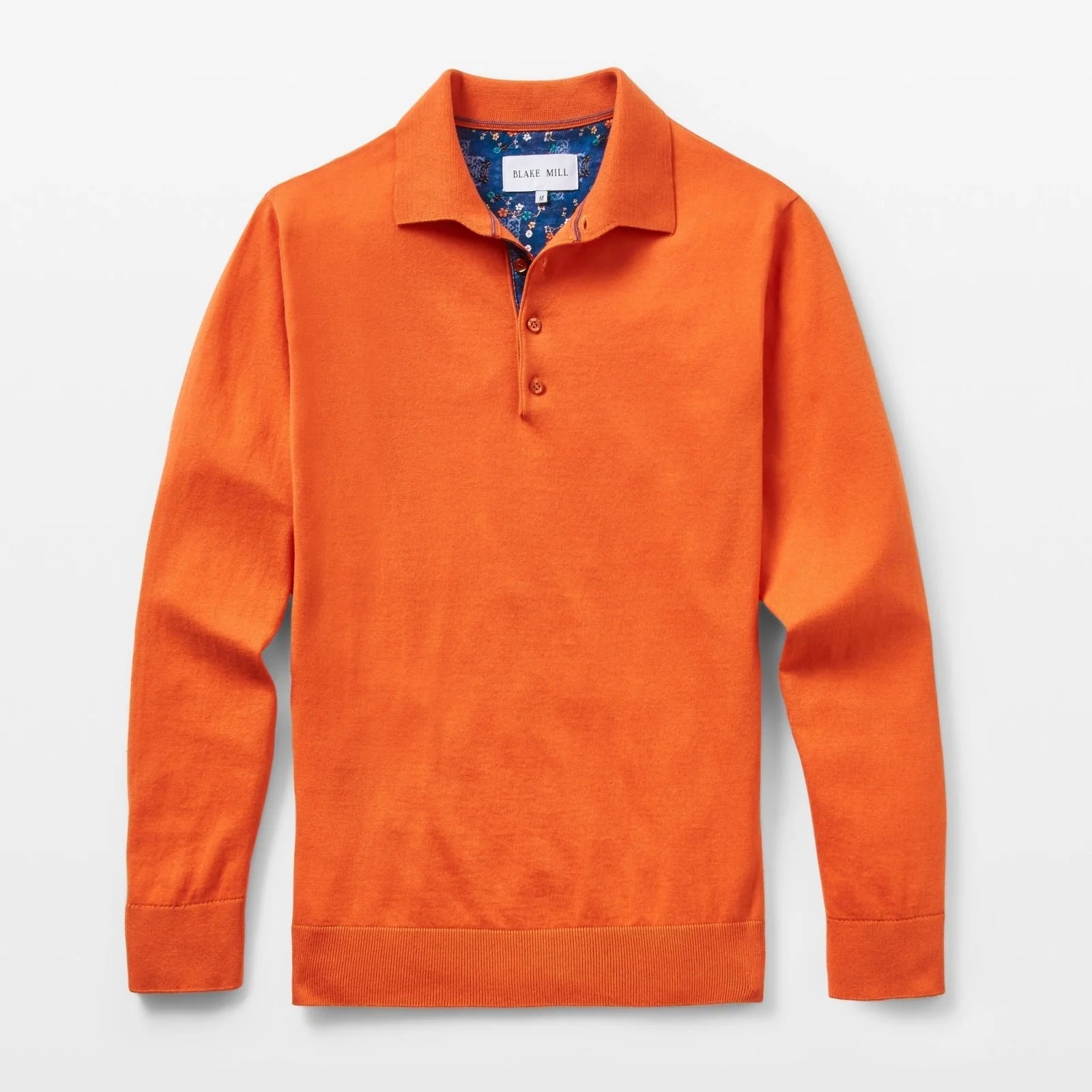Sustainable Practices in Cashmere Production: A Closer Look at Men's Knitwear
Understanding Cashmere: Origins and Significance in Men's Fashion
Cashmere, known for its unparalleled softness and warmth, has become a staple in men's knitwear. Originating from the fine undercoat of cashmere goats, this luxurious material has a long history in fashion. Cashmere is highly prized for its unique properties, making it perfect for creating cosy and comfortable garments like sweaters and neck jumpers.
The United Kingdom and the United States are major players in the cashmere industry, with renowned brands and designers incorporating this premium material into their collections. Cashmere garments are highly valued for their durability and timeless style, making them a worthwhile investment for any discerning gentleman.
The Journey from Goat to Garment: How Cashmere is Made
The journey from goat to knitted menswear garment begins with the rearing of cashmere goats, which are primarily found in regions like Mongolia, China, and parts of Central Asia. These goats naturally shed their soft undercoat during the spring months, which is then collected and processed to create cashmere yarn.
The collected cashmere is carefully sorted and cleaned to remove any impurities. It is then processed into yarn, which is spun and woven into luxurious fabrics. This fabric is then used to create a wide range of men's knitwear, including sweaters, cardigans, and scarves.
The entire process requires precision and attention to detail, as cashmere is a delicate and luxurious material. From the shearing of the goats to the final finishing touches on the garment, every step in the production process contributes to the exceptional quality and luxury that cashmere is known for.
The Role of Cashmere in Contemporary Men's Knitwear
Cashmere plays a significant role in contemporary men's knitwear, offering both style and comfort. The crew neck jumper, a timeless classic, is a popular choice for casual wear and can be dressed up or down for various occasions.
Designers and brands often feature cashmere in their knitwear collections, showcasing its versatility and luxury. Cashmere sweaters and cardigans are favoured for their softness, lightweight feel, and excellent insulation properties, making them ideal for layering during cooler months.
Men's cashmere knitwear is available in a wide range of colours and styles, allowing individuals to express their personal style while enjoying the unmatched comfort and elegance of this premium material. Whether paired with jeans for a casual look or worn with tailored trousers for a more polished ensemble, cashmere knitwear adds a touch of sophistication to any outfit.
The Environmental Footprint of Cashmere Production
While cashmere is a luxurious material, its production can have a significant environmental footprint. One of the main concerns is the high water usage required in the processing of cashmere. The cashmere industry relies on water for washing and dyeing the fibres, which can put strain on local water sources.
Another environmental impact of cashmere production is land degradation. Overgrazing by cashmere goats can lead to soil erosion and degradation, affecting the health of ecosystems. This can result in the loss of biodiversity and disruption of local ecosystems.
It is essential for the cashmere industry to adopt sustainable practices that minimise water usage and promote responsible land management. By implementing water-efficient technologies and supporting land conservation efforts, the industry can reduce its environmental impact and preserve the natural resources necessary for cashmere production.
Water Usage and Land Degradation: The Hidden Costs
Water usage is a significant concern in cashmere production. The processing of cashmere fibres requires large amounts of water for washing and dyeing, contributing to a substantial environmental footprint. This high water usage can strain local water sources, particularly in regions where water scarcity is already an issue.
Additionally, overgrazing by cashmere goats can lead to land degradation. These goats have a voracious appetite and can quickly deplete vegetation, leading to soil erosion and nutrient loss. As a result, ecosystems can suffer, and biodiversity can be threatened.
To address these hidden costs, the cashmere industry must prioritise sustainable practices that reduce water usage and promote responsible land management. By implementing water-efficient technologies and adopting land conservation strategies, the industry can minimise its environmental impact and contribute to the long-term sustainability of cashmere production.
Biodiversity Loss: How Cashmere Production Affects Wildlife
Cashmere production can have a significant impact on wildlife and biodiversity. The overgrazing of cashmere goats can deplete vegetation, leading to habitat loss for many species. This can disrupt entire ecosystems and result in the loss of diverse plant and animal life.
To mitigate this impact, sustainable practices in cashmere production are crucial. Responsible land management, rotational grazing, and conservation efforts can help preserve wildlife habitats and promote biodiversity. By supporting brands and designers that prioritise sustainable practices, consumers can contribute to the preservation of wildlife and the environment.
Ethical Considerations in Cashmere Farming
In addition to environmental concerns, ethical considerations are essential in cashmere farming. Animal welfare is a significant aspect, ensuring that cashmere goats are well cared for and not subject to unnecessary harm or suffering during the production process.
Fair labour practices are also crucial in the cashmere industry. Workers involved in cashmere production, from goat herders to yarn spinners, should be treated fairly and provided with safe working conditions and fair wages.
By supporting brands and designers that prioritise animal welfare and fair labour practices, consumers can make a positive impact on the industry. Responsible sourcing and transparency in the supply chain are key factors in ensuring ethical cashmere production.
Animal Welfare: Raising Standards in Cashmere Goats' Care
Ethical considerations in cashmere farming involve raising standards in the care of cashmere goats. This includes ensuring that the goats have access to adequate food, water, and shelter. It also involves implementing practices that promote their overall health and well-being.
Responsible cashmere producers prioritise the welfare of their goats, providing them with proper nutrition, sufficient grazing areas, and protection from extreme weather conditions. Regular veterinary care and humane shearing practices are also critical to maintain the health and comfort of the goats.
By supporting brands and designers that prioritise animal welfare in their cashmere production, consumers can contribute to the improvement of standards and promote ethical practices throughout the industry.
Fair Labor Practices: Supporting the Artisans Behind Your Knitwear
Fair labour practices are essential in the cashmere industry, ensuring that the artisans behind your knitwear are treated fairly and provided with safe working conditions. Cashmere production involves various skilled workers, from goat herders to yarn spinners and garment makers.
By supporting brands and designers that prioritise fair labour practices, consumers can make a positive impact on the livelihoods of these artisans. Choosing knitwear that is ethically produced and sourced ensures that the people who contribute to the creation of your garments are treated with respect and dignity.
Innovations in Sustainable Cashmere Production
In recent years, innovations in sustainable cashmere production have emerged, offering promising solutions to reduce the environmental impact of the industry. One such innovation is the development of eco-friendly dyeing techniques. These techniques minimise the use of harmful chemicals and reduce water pollution, making the dyeing process more environmentally friendly.
Another innovation is the production of organic cashmere. Organic cashmere is sourced from goats raised on organic farms that follow strict guidelines to ensure the well-being of the animals and the sustainability of the land. By avoiding the use of synthetic fertilisers and pesticides, organic cashmere production promotes healthier ecosystems and supports the health of cashmere goats.
These innovations in sustainable cashmere production are paving the way for a more environmentally conscious industry. By embracing these practices and supporting brands that prioritise sustainability, consumers can contribute to the positive transformation of the cashmere industry.
Eco-friendly Dyeing Techniques: Reducing Chemical Use
Eco-friendly dyeing techniques are a significant innovation in sustainable cashmere production. These techniques focus on reducing the use of harmful chemicals during the dyeing process, minimising water pollution and environmental impact.
Conventionally, dyeing cashmere involves the use of harsh chemicals that can be harmful to both the environment and the health of workers. Eco-friendly dyeing techniques aim to replace these chemicals with safer alternatives, such as natural dyes derived from plant sources.
By embracing these eco-friendly dyeing techniques, the cashmere industry can significantly reduce its chemical footprint and promote a more sustainable and environmentally conscious approach to production. Consumers can play a role in supporting this transformation by choosing garments that have been dyed using these methods.
Recycled and Organic Cashmere: A New Direction for the Industry
Recycled and organic cashmere are emerging trends in the industry, offering a new direction for sustainable cashmere production. Recycled cashmere involves repurposing pre-existing cashmere garments or remnants to create new products. This reduces the need for virgin cashmere production and minimises waste.
Organic cashmere, on the other hand, is sourced from goats raised on organic farms that follow strict guidelines to promote sustainability and animal welfare. These farms avoid the use of synthetic fertilisers and pesticides, preserving the health of the goats and the environment.
By embracing recycled and organic cashmere, the industry can move towards a more circular and sustainable model. Consumers can support this shift by choosing garments made from recycled or organic cashmere, contributing to the reduction of waste and the promotion of sustainable practices.
The Impact of Fast Fashion on Cashmere Quality and Sustainability
Fast fashion has had a significant impact on the quality and sustainability of cashmere production. The demand for cheap and trendy cashmere garments has led to the overproduction of cashmere, often at the expense of quality and sustainability.
Overproduction in the cashmere industry has resulted in a decline in the quality of cashmere garments, as manufacturers prioritise speed and low cost over craftsmanship and durability. This has led to issues such as pilling, shrinkage, and reduced longevity of cashmere products.
Responsible consumption is key to mitigating the negative effects of fast fashion on cashmere quality and sustainability. By investing in high-quality cashmere garments and prioritising durability over trends, consumers can support brands that promote sustainable practices and craftsmanship. This shift in consumer behaviour can encourage the industry to prioritise quality and sustainability over mass production.
The Dilemma of Overproduction: Quantity vs. Quality
The dilemma of overproduction in the cashmere industry has resulted in a trade-off between quantity and quality. Manufacturers under pressure to meet fast fashion demands often prioritise speed and low cost over craftsmanship and quality control.
Overproduction can lead to a decline in the quality of cashmere garments, as manufacturers cut corners to meet demand. This can result in issues such as pilling, shrinkage, and reduced longevity of cashmere products.
Consumers can play a role in addressing this dilemma by prioritising quality over quantity. By investing in high-quality cashmere garments and supporting brands that prioritise craftsmanship and sustainability, consumers can send a message to the industry that quality should never be compromised.
Encouraging Responsible Consumption: Tips for Consumers
Responsible consumption is essential in promoting sustainability in the cashmere industry. Here are some tips for consumers to make more conscious choices:
- Invest in high-quality cashmere garments that are built to last. Quality craftsmanship and durable materials ensure that your cashmere pieces will stand the test of time.
- Choose timeless designs that can be worn season after season, rather than trendy pieces that may quickly go out of style.
- Opt for brands and designers that prioritise sustainability and ethical practices in their cashmere production.
- Take proper care of your cashmere garments by following care instructions. Hand washing or dry cleaning can help maintain their quality and extend their lifespan.
- Consider buying second-hand or recycled cashmere garments. This reduces the demand for new production and prevents waste.
By adopting these tips, consumers can make a positive impact on the cashmere industry by supporting sustainable practices and promoting responsible consumption.
The Future of Cashmere: Trends and Predictions
The future of cashmere production lies in sustainable practices and shifting consumer preferences. As awareness of the environmental and ethical impact of fashion grows, consumers are increasingly seeking out sustainable alternatives, including cashmere produced using eco-friendly methods.
Brands and designers are responding to this shift by investing in sustainable production processes and sourcing practices. This includes adopting eco-friendly dyeing techniques, using recycled and organic cashmere, and prioritising animal welfare and fair labour practices.
Technological advancements are also playing a significant role in the future of cashmere production. Innovations in fibre production and garment manufacturing are enabling the creation of more sustainable and efficient cashmere products.
Shifting consumer preferences towards eco-consciousness and sustainability are driving the industry towards a more responsible and ethical future. By supporting brands that prioritise sustainable production and promoting responsible consumption, consumers can contribute to the positive transformation of the cashmere industry.
Technological Advancements in Sustainable Production
Technological advancements are shaping the future of sustainable cashmere production. Innovations in fibre production and garment manufacturing are enabling the creation of more sustainable and efficient cashmere products.
New technologies are being developed to reduce water usage and chemical inputs in the processing of cashmere. From water-efficient dyeing techniques to advanced recycling processes, these innovations are minimising the environmental impact of cashmere production.
In addition, advancements in fibre engineering are enabling the production of cashmere-like materials using sustainable alternatives. These materials replicate the luxurious feel and warmth of cashmere while reducing the reliance on traditional cashmere production methods.
By embracing these technological advancements, the cashmere industry can further enhance its sustainability and reduce its environmental footprint. This, in turn, will contribute to a more responsible and ethical future for cashmere production.
Shifting Consumer Preferences and the Rise of Eco-consciousness
The rise of eco-consciousness among consumers is driving a shift in preferences towards sustainable and ethical fashion, including cashmere. Consumers are increasingly seeking out brands and products that align with their values, prioritising sustainability, and responsible production.
This shift in consumer preferences is forcing the cashmere industry to adapt and prioritise sustainable practices. Brands and designers are responding by investing in eco-friendly production processes, sourcing ethically produced materials, and embracing transparency in their supply chains.
As consumer demand for sustainable cashmere continues to grow, the industry will be driven to innovate and develop new solutions to reduce its environmental impact. The rise of eco-consciousness is not just a trend; it is a fundamental change in consumer behaviour that is shaping the future of the cashmere industry.
Frequently Asked Questions
What Makes Cashmere Sustainable?
Cashmere can be considered sustainable when produced using environmentally friendly and ethical practices. This includes minimising the environmental footprint, prioritising animal welfare, reducing water usage, and embracing recycled or organic cashmere.
For more inspiration, read our blog Cashmere Pullovers & The 'Old Money' Aesthetic - Sophisticated Jerseys for Men.







